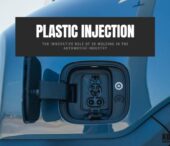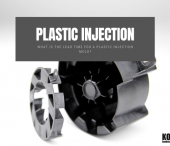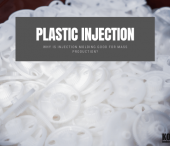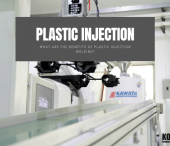When it comes to injection moulding, there are a lot of points to consider, including the level of precision of the parts specified and the lifespan tools that will be used for the job.
Precision injection moulding has to be approached in an engineering-driven and methodical approach. This is especially relevant if you consider the consistency and the quality of your products. It may not be obvious at the beginning of the program but the consistency and quality of the injection moulding process directly affects the profitability of the program. This can be doubly true when you are working on programs for use in the automobile or medical industries which could last for years if not decades.
Highly sensitive and precise machines must get their parts from correspondingly precise injection moulding products. To that end, let’s take a look at some of the points of concern regarding precision plastic injection moulding.
What is Plastic Injection Moulding?
Plastic injection moulding is a process in which polymers or resin are melted and then injected through a heated barrel driven by a rotating screw. The pressure and heat generated by the rotating screw in the barrel melts the plastic pellets to be expelled into an injection mould.
The molten melt would then be cooled and hardened to take on the form of the mould.
Once the solidified parts are ready for retrieval, they are taken or ejected from the mould.
These parts are then inspected and tested for quality. Parts that passed the quality control are sent for packaging or are immediately placed inside the machines or devices that they were meant for.
Many aspects of the plastic injection moulding process are highly controlled. Numerous factors are taken into consideration for polymer selection for certain parts; factors such as durability, strength, costs, secondary processes requirements, etc..
As more manufacturers adopt fully automated assembly lines where moulded parts and other relevant components are fed into the final assembled products come out, the dimensional precision and repeatability requirements increase. This is why you need injection moulding products that are specialized in producing highly precise and uniform parts.
RELATED SERVICES: Precision Injection Mold and Molding

Precision in Plastic Injection Moulding Products
High-precision injection moulding is a process that is crucial in heavy industries, medical devices, consumer electronics and more. This makes sense since some of these parts are literally half an inch in size.
To that end, the equipment used for producing such precise parts must be of the highest precision levels. The moulds themselves would need to be as well built within super tight tolerances with ample cooling as well as gas relief for instance to achieve such precision requirements.
The process of producing these parts is simple enough, as well. It basically goes as follows:
- Design - Design for manufacture or DFM is where the design of the part is built via 3D modeling so that it can become toolable.
- Building the Mould - Once the part design has been created, the mould where the molten plastic will be injected is built and tested for quality before proceeding for validation.
- Injecting - After the final version of the mould is produced, the appropriate materials are then fed through the hopper for plasticizing before being sent into the injection barrel and eventually, into the mould.
- Cooling - Once the molten materials are injected into the mould, they are allowed to cool down in a carefully controlled manner. It is extremely important that there is no warping or unevenness in the part as it cools.
- Quality Control - Before the parts are sent to be packaged, each one is inspected to make sure that they meet the minimum requirements for release, especially high requirement and tight-tolerance parts that are meant for complex machines.
What Precision Plastic Injection Moulding is Used For
Plastic injection moulding is used in a wide variety of functions and in producing a bewildering array of parts. These include cogs, gears, wheels, casings, and more. In many cases, the demands for precision can go down to microns. A human hair is anything from 30 to 100 microns and a precision part has tolerances of up to +/- 5 microns.
Among the industries that precise plastic injection moulding parts are used include the medical industry where surgical machines require small, intricate parts to function. The auto and airline industries make use of such parts, as well, but so does the tech market.
Smartphones, computers, cameras, and many others require specialized moulded precision parts in order to function properly. A case in point is waterproofing of plastic housings; these are best done with the 2K moulding process which is made up of hard plastics housing with a soft seal.
2K injection mould and moulding is considered a precision tooling and moulding process based on the tight machining tolerances required.
That’s just one example.
Products produced using this method can also be applied to farming, home electronics, and even cosmetics.
Why Choose Kore Industries for Precision Injection Moulding?
At Kore Industries, we only use the most advanced and cutting-edge technology in plastic injection moulding for producing high-precision parts that our customers need.
We have been producing both single-shot and multi-shot injection plastic parts for many years. We are proud to say that we have over 95% customer retention rate.
We take pride in being the most professional plastic parts manufacturer for every industry. We can create any kind of plastic gear that our customers want at the highest possible quality they could ask for.
RELATED: CUSTOMIZED SPUR GEARS & PLASTIC INJECTION MOLDED GEARS
RELATED SERVICES: Precision Plastic Gears





